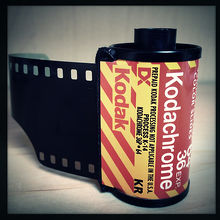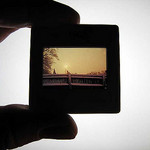Brief History of Kodachrome

Color photography had been around since the 1860's but until Kodachrome was introduced in 1935, the process was very cumbersome. Exposure time was long and the method to developing the film led to less than great photos - they were dull and washed out, nothing like the real life situations depicted. Kodachrome became the first commercially successful color film. It was offered in 16 mm for motion pictures, 35 mm slides and 8 mm home movies. Popularity peaked in the 60's and started to decline in the 80's. Although Kodachrome was an improvement in the 30's, by the 80's it became the outdated process.
What actually is Kodachrome film?
As you may have guessed, Kodachrome films originated from the family of Kodak. This black and white film had colored dyes added to it during processing. This allowed the picture’s edges to be intensified making the detail sharper and clearer. If stored in a dark place decades later you could find this film to produce a photo that looks as if it was taken yesterday. The color keeps for up to 60 years! This is why Kodachrome was preferred over other professional films.
 Kodachome is layered black and white film that later turns to red, green and blue. These colors will not show up until development, meaning it could not have been done around the corner from your house but rather sent to independent film labs that Kodak supported to use a special “k-14 process.” This process took the film and dipped it into 30 different baths for specific amounts of time so that the color could diffuse.
Kodachome is layered black and white film that later turns to red, green and blue. These colors will not show up until development, meaning it could not have been done around the corner from your house but rather sent to independent film labs that Kodak supported to use a special “k-14 process.” This process took the film and dipped it into 30 different baths for specific amounts of time so that the color could diffuse.
Scanning Kodachrome Film
For best results, Kodachrome slides should be scanned on a dedicated film scanner. The amount of post-capture adjustment necessary to produce the best image quality will depend upon how well optimized the scanner (and scanner settings) is for the unique characteristics of the film. Many photographers, including enthusiast and pros, believe the Nikon COOLSCAN series of dedicated film scanners are the best capture device for Kodachrome transparencies.
Ideal scanners for Kodachrome would have the following:
- high resolution scans of at least 2000 spi (aka dpi), preferably 3000 spi and higher
- special settings (vs configs)"
- high dynamic range
- provides a multiple exposure mode (allows for multiple exposures using a single or double pass method)
Unfortunately due to the rise of digital photography, Kodachrome lost its popularity. Despite the amazing pictures the film can produce, manufacturing was stopped in 2009 and processing ended in 2010. Don’t worry - your memories are not lost! You can still scan your Kodachrome film at home or have a photo scanning service do it for you.
Check out this Free Guide by FotoBridge - How to Select a Photo Scanning Service
Photo credit: http://flic.kr/p/6yuDmD, http://flic.kr/p/cYgAHb





